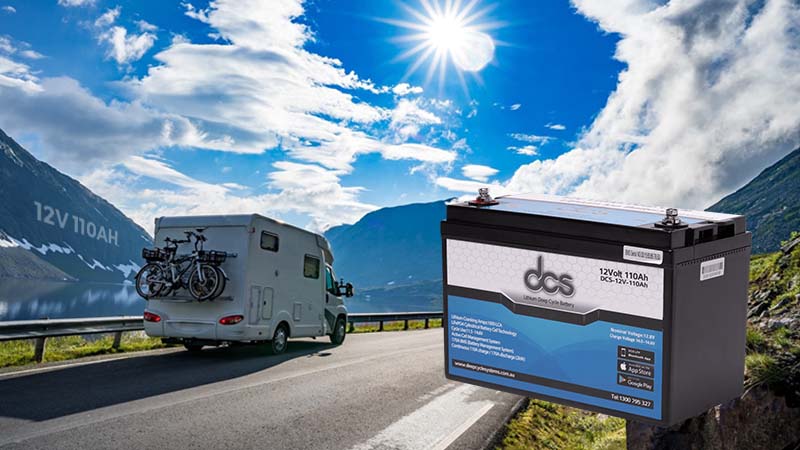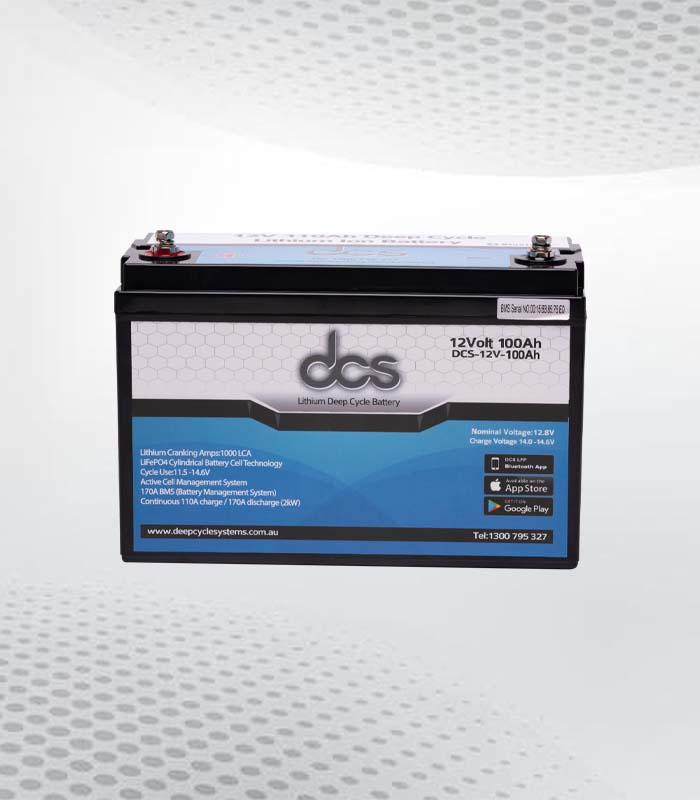When it comes to batteries, there are many different types and it can be difficult to decide which one to choose. Two of the most popular types of batteries are lithium iron phosphate and lithium phosphate batteries. Both of these batteries have their advantages and disadvantages. In this blog post, we’ll be comparing Lithium Iron Phosphate Battery and lithium phosphate batteries to determine which one is better for your needs. We’ll discuss the differences between the two and look at their pros and cons to help you make an informed decision.
What are lithium ion battery and Lithium Phosphate Batteries?
Lithium ion battery and Lithium Phosphate batteries are two types of rechargeable lithium-ion batteries that have gained popularity in recent years. Both of these batteries offer advantages over traditional lead-acid batteries, making them a preferred choice for various applications.
Lithium Iron Phosphate batteries, also known as LiFePO4 batteries, are known for their excellent thermal stability and long cycle life. They have a higher energy density than lead-acid batteries, allowing for a smaller and lighter battery pack. LiFePO4 batteries are also more resistant to thermal runaway and do not pose a risk of explosion or fire. This makes them safer for use in applications such as electric vehicles and renewable energy systems.
On the other hand, Lithium Phosphate batteries, also known as lithium Ferro phosphate batteries, share many similarities with LiFePO4 batteries. They also have a long cycle life and excellent thermal stability. However, they have a lower energy density compared to LiFePO4 batteries, which means they may require a larger battery pack for the same energy storage capacity.
Differences in Chemistry
Lithium Iron Phosphate (LiFePO4) and Lithium Phosphate batteries may sound similar, but they have significant differences in their chemistry.
LiFePO4 batteries are composed of lithium iron phosphate as the cathode material. This material provides a stable structure, which results in excellent thermal stability and long cycle life. On the other hand, lithium phosphate batteries use lithium Ferro phosphate as the cathode material. While both batteries offer similar advantages, such as long cycle life and thermal stability, their chemistry leads to some variations in performance.
The difference in cathode materials affects the energy density of the batteries. LiFePO4 batteries have a higher energy density compared to lithium phosphate batteries, allowing for a smaller and lighter battery pack. This can be advantageous for applications where space and weight are critical factors.
Another difference lies in the voltage of the batteries. LiFePO4 batteries typically have a nominal voltage of 3.2V, while lithium phosphate batteries have a slightly lower nominal voltage of 3.0V. This voltage difference may influence the overall performance and compatibility with different devices or systems.
Performance Comparison
Now that we’ve explored the chemistry behind lithium iron phosphate (LiFePO4) and lithium phosphate batteries, let’s dive into the performance comparison between these two battery types. When it comes to performance, there are several key factors to consider.
Firstly, let’s talk about the discharge rate. LiFePO4 batteries have a high discharge rate, which means they can provide a large amount of power quickly. On the other hand, lithium phosphate batteries have a lower discharge rate, meaning they may not be as suitable for high-power applications.
Next, let’s consider the energy density. LiFePO4 batteries have a higher energy density compared to lithium phosphate batteries. This means that LiFePO4 batteries can store more energy in a smaller and lighter battery pack, making them ideal for applications where space and weight are critical factors.
Another important aspect to consider is the cycle of life. Both LiFePO4 and lithium phosphate batteries offer a long cycle life, meaning they can be charged and discharged numerous times without significant capacity loss. This is particularly beneficial for applications that require frequent cycling.
Safety and Environmental Impact
When it comes to choosing a battery, safety and environmental impact are important factors to consider. Both lithium iron phosphate (LiFePO4) and lithium phosphate batteries have certain advantages in this regard.
In terms of safety, LiFePO4 batteries have gained a reputation for being one of the safest options on the market. They have excellent thermal stability and are resistant to thermal runaway, which means they are less likely to overheat or catch fire. This makes them a popular choice for applications where safety is a top priority, such as electric vehicles and renewable energy systems.
Lithium phosphate batteries, on the other hand, also offer a good level of safety. While they may not have the same level of thermal stability as LiFePO4 batteries, they still have a relatively low risk of thermal runaway and are considered to be safe for use in various applications.
Applications of Lithium Iron Phosphate and Lithium Phosphate Battery
Lithium Iron Phosphate (LiFePO4) and Lithium Phosphate Battery have a wide range of applications due to their unique characteristics and advantages. Let’s explore the various applications where these batteries are commonly used.
One of the primary applications for both LiFePO4 and lithium phosphate batteries is in electric vehicles (EVs). The high energy density and long cycle life of these batteries make them ideal for powering electric cars and motorcycles. Additionally, their excellent thermal stability and safety features ensure a reliable and secure energy source for EVs.
Renewable energy systems, such as solar and wind power, also benefit from the use of these batteries. They can store the excess energy generated by renewable sources and provide a consistent power supply even when the sun isn’t shining or the wind isn’t blowing. This makes them crucial for off-grid or backup power systems.
Another popular application is in the field of consumer electronics. From smartphones to laptops, LiFePO4 and lithium phosphate batteries provide long-lasting power in a compact and lightweight design. Their high discharge rates and energy density allow for efficient and reliable operation of these devices.
Cost Comparison
Now, let’s dive into the cost comparison between lithium iron phosphate (LiFePO4) and lithium phosphate batteries. Cost is an important factor to consider when choosing a battery, as it can greatly impact your budget and overall affordability.
LiFePO4 batteries are generally known to be more expensive upfront compared to lithium phosphate batteries. This is mainly due to the higher production costs associated with the materials used in LiFePO4 batteries. However, it’s important to note that LiFePO4 batteries have a longer lifespan and higher cycle life, which can make them a more cost-effective option in the long run.
On the other hand, lithium phosphate batteries tend to be more affordable upfront. Their lower production costs and simpler manufacturing processes contribute to their lower price point. However, it’s worth considering that lithium phosphate batteries may have a slightly shorter lifespan compared to LiFePO4 batteries, which could result in additional replacement costs over time.
When considering the cost, it’s crucial to weigh the upfront investment against the long-term benefits and performance of each battery type. Assess your specific needs and budget to determine which battery will provide the best value for your application.
Efficiency and Longevity Comparison
Efficiency and longevity are important factors to consider when choosing between lithium iron phosphate (LiFePO4) and lithium phosphate batteries. Let’s take a closer look at how these two battery types compare in terms of their efficiency and longevity.
Efficiency refers to how well a battery can convert stored energy into usable power. LiFePO4 batteries are known for their high efficiency, meaning they can deliver more power for a longer period. This makes them ideal for applications that require a consistent and reliable power source.
On the other hand, lithium phosphate batteries offer a slightly lower efficiency compared to LiFePO4 batteries. While they still provide decent performance, their lower efficiency may result in slightly shorter runtimes or the need for larger battery packs to achieve the same energy storage capacity.
When it comes to longevity, both battery types offer impressive lifespans. LiFePO4 batteries can typically endure thousands of charge and discharge cycles, while lithium phosphate batteries can also last for a significant number of cycles. This makes both options suitable for applications that require frequent charging and discharging.
FAQs
Do you have some burning questions about lithium iron phosphate (LiFePO4) and lithium phosphate batteries? Don’t worry, we’ve got you covered! Here are some frequently asked questions about these battery types:
1. Are LiFePO4 and lithium phosphate batteries the same thing?
No, they are not the same. While they have similarities, such as long cycle life and thermal stability, they have differences in their cathode materials, energy density, and voltage.
2. Which battery type is safer?
Both LiFePO4 and lithium phosphate batteries are considered safe options. LiFePO4 batteries are known for their excellent thermal stability and resistance to thermal runaway, making them one of the safest choices on the market.
3. What are the main applications for these batteries?
LiFePO4 and lithium phosphate batteries are commonly used in electric vehicles, renewable energy systems, consumer electronics, and industrial applications like energy storage and power tools.
Conclusion
LiFePO4 batteries offer excellent thermal stability, long cycle life, and high energy density. They are a safer option and are well-suited for applications like electric vehicles and renewable energy systems. On the other hand, lithium phosphate batteries provide decent performance at a more affordable upfront cost, making them a popular choice for certain applications.
| Other Good Articles to Read |
| niche blogs connect |
| blogs 97 |
| Blog Stitution |
| blogs unplugged |
| blogs cotch rouge |
| blog signatr |
| blog sintonias |
| blog zilla |
| consumer forums |
| finance forums |
| g blogs |
| too blog |



